I think that I shall never see
A poem lovely as a tree…
Poems are made by fools like me,
But only God can make a tree.
~First and last lines of the poem “Trees” by Joyce Kilmer, 1913
I was going to title this article “The Tree with Biblical Roots,” but the pun was too awful—even for me. However, trees and scripture are two constant objects of fascination for Sacred Windows because they are such marvelous examples of grace and of God’s presence in this world.
The Bible contains bookend trees, in the Garden of Eden and in the Book of Revelation, both called the “tree of life”—amazing! Among others:
- Abraham sat under an oak tree when he met the three mysterious angels (Genesis 18:1).
- Nathaniel was reading scripture under a fig tree when Jesus spotted him (John 1:48).
- Zacchaeus climbed a sycamore tree to get a glimpse of Jesus (Luke 19:1-4).
- Jesus prayed in a garden of olive trees during His final agony (Luke 22:39).
And the very first psalm says that the just man is “like a tree planted by flowing water that gives its fruit in due season” (Psalm 1:3).
Truly, “only God can make a tree,” and that’s probably why there are so many of them in the Bible from beginning to end.
The Rainbow Eucalyptus
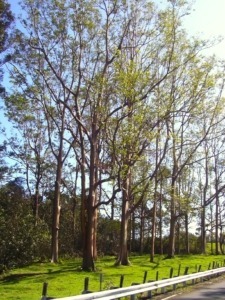 Speaking of trees, one of the most idiosyncratic trees in the world is the Rainbow Eucalyptus, which, as you may have guessed, has bark that naturally bristles with the colors of the rainbow—it’s quite amazing!
Speaking of trees, one of the most idiosyncratic trees in the world is the Rainbow Eucalyptus, which, as you may have guessed, has bark that naturally bristles with the colors of the rainbow—it’s quite amazing!
In normal circumstances you could easily overlook it as just another tree along the roadside. It is a member of the myrtle family and is native to Australia, but it grows in many places in the Far East, especially, Indonesia, Papua New Guinea, and the Philippines.
It also likes tropical climates in the US and can be found in California, Florida, and Hawaii.
It is perhaps the most distinctive of the 900+ species of Eucalyptus. It’s got flair, personality, and durability.
The tree is cultivated for its sturdy wood, its fiber for paper making, as well as for oils, resins, and gums. It’s kind of an all-purpose tree. It needs a lot of water to survive so it tends to inhabit zones with plenty of rainfall.
An Interesting Name
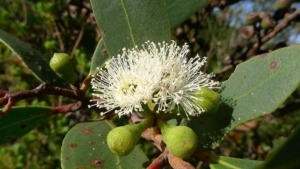 Eucalyptus gets its name from two Greek words “eu” meaning “good” or “well” and “kalypto” meaning “covered”. A French botanist in the 1780s bestowed that name on the species because of its flower which has a hard shell (“well-covered”) that blossoms into beautiful starburst flowers of various colors depending on the species.
Eucalyptus gets its name from two Greek words “eu” meaning “good” or “well” and “kalypto” meaning “covered”. A French botanist in the 1780s bestowed that name on the species because of its flower which has a hard shell (“well-covered”) that blossoms into beautiful starburst flowers of various colors depending on the species.
(“Kalypto”, by the way, is the same root word for “apocalypse” which, in the case of the last book of the Bible, means “uncovered” or “revealed”, hence the Book of Revelation.)
That Amazing Bark
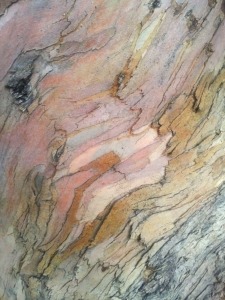 I’m less concerned about the Eucalyptus flower, which is beautiful in its own right, than about its amazing bark.
I’m less concerned about the Eucalyptus flower, which is beautiful in its own right, than about its amazing bark.
The tree doesn’t have the rainbow coloring all year round. It grows bark like any other tree, but its bark is mottled (multi-toned and papery), and then “sheds” at certain times of year.
The shedding of the outer layers of bark reveals the tender green skin on the underside, and when the greenish patches are exposed to the air, they soon turn into every color of the rainbow!
They start out as faint patches of pastel colors…
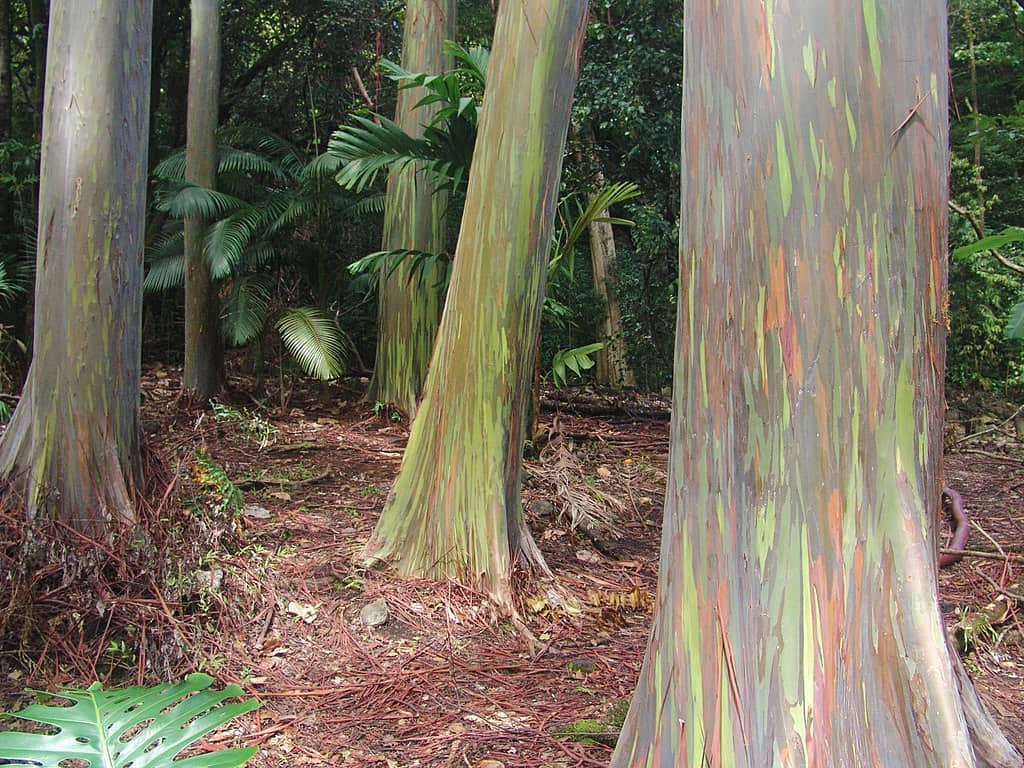
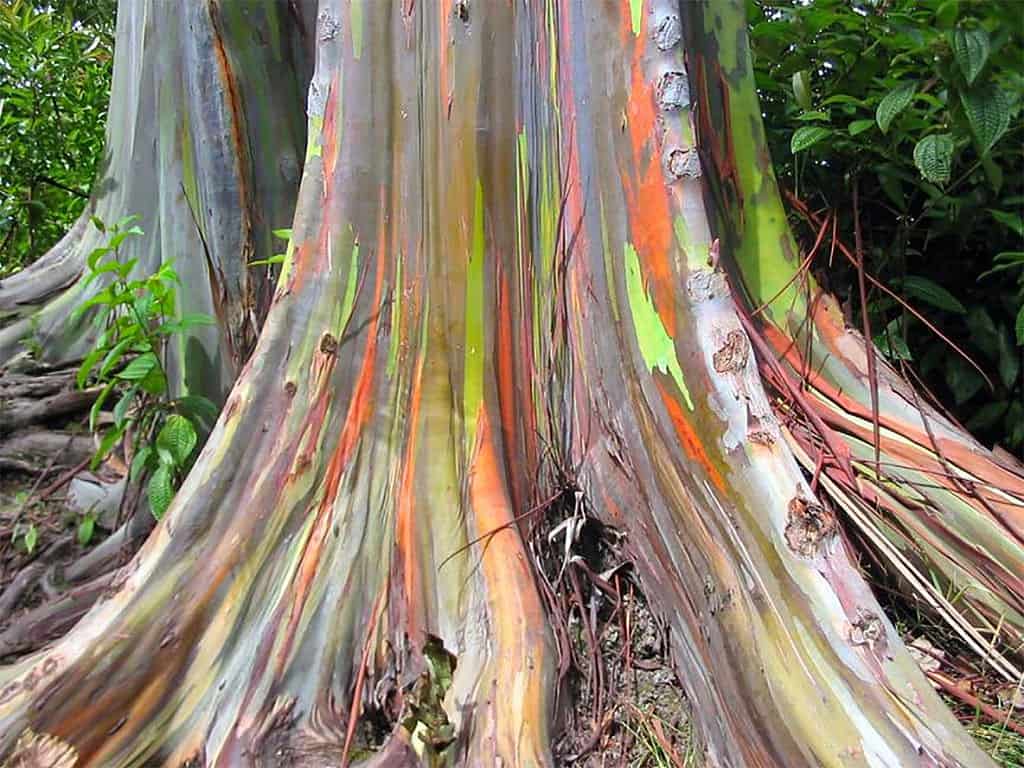
… and then deepen in color, sometimes even reaching a level of neon brightness. Wow!
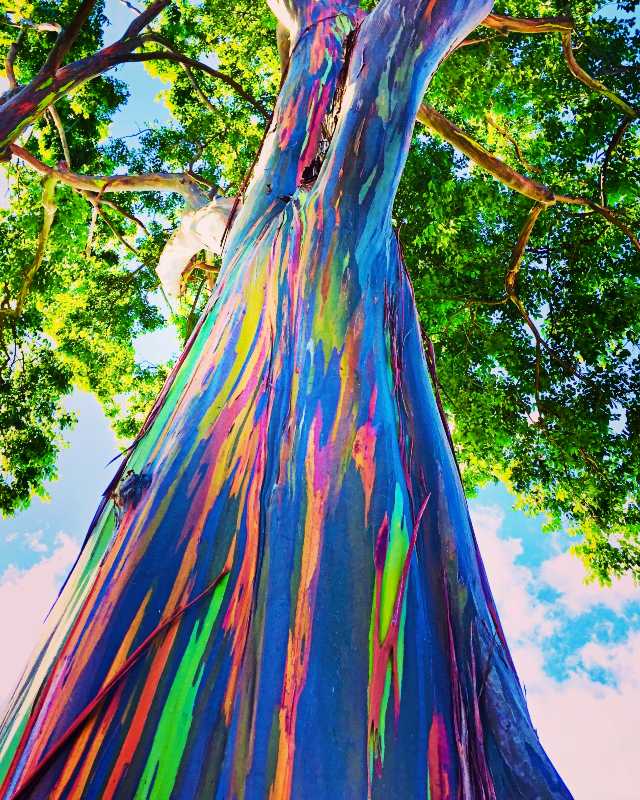
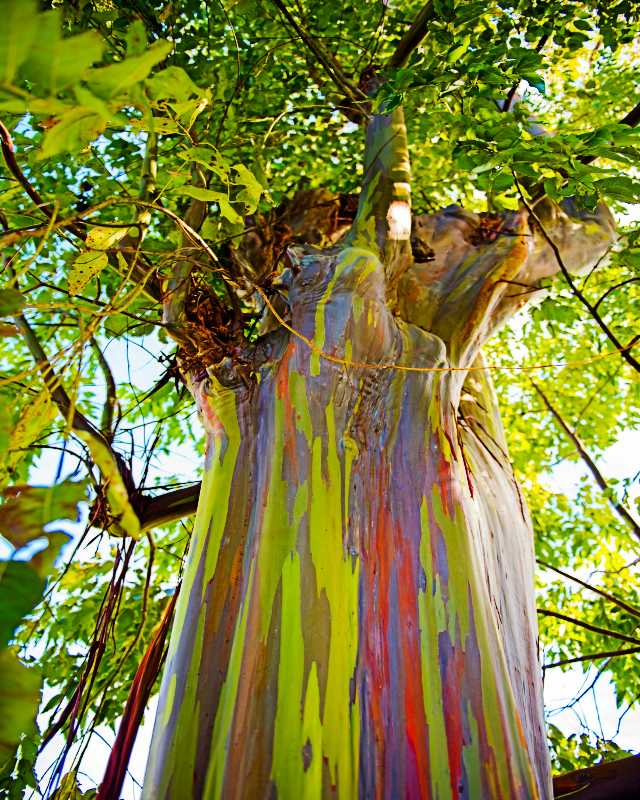
It’s easy to see that the name Rainbow Eucalyptus is well-deserved.
Biblical Rainbows
Returning to scriptural things, it’s interesting to note that there are four passages in the Bible that feature rainbows.
The most familiar reference is the story of Noah in Genesis 9 where the rainbow was the sign of God’s covenant with humanity after He had washed away the wickedness of the earth through the Great Flood. The rainbow was a promise that God would never destroy the earth by water again.
(I have it from a reliable source that God included a clause in the contract leaving open the possibility of the total destruction of humanity by fire, which we’re expecting any day now.)
But three other references to rainbows might surprise you. Sometimes they are called “haloes”; both rainbow and halo are translated from the same Greek word: iris. They are all related to God’s glory.
1/ Ezekiel’s frightening vision of the Cherubim opened out into a vision of God seated on His heavenly throne in glory:
“Just like the appearance of the rainbow in the clouds on a rainy day so was the appearance of brilliance that surrounded him. Such was the appearance of the likeness of the glory of the LORD. And when I saw it, I fell on my face and heard a voice speak” (Ezekiel 1:28).
 2/ The Book of Revelation describes the throne of God as surrounded by a rainbow:
2/ The Book of Revelation describes the throne of God as surrounded by a rainbow:
“A throne was there in heaven, and on the throne sat one whose appearance sparkled like jasper and carnelian. Around the throne was a halo as brilliant as an emerald” (Revelation 4:2-3).
3/ Finally, Revelation uses the rainbow image again when it describes another vision of the mightiest angel that appears in the book (it’s well worth reading the whole of chapter 10 when you have a minute):
“Then I saw another mighty angel coming down from heaven wrapped in a cloud, with a halo around his head; and his face was like the sun and his legs like pillars of fire” (Revelation 10:1).
This angel is truly a revelation of God’s glory. The description of his head surrounded by a rainbow is a reference to God’s covenant with Noah combined with the other symbols of God’s presence with Israel as they wandered through the desert (the pillars of fire and cloud).
A Sign of Glory
It’s sad that the rainbow has been co-opted for ideological purposes in our day and age. It is one of the most beautiful symbols of God’s glory on earth.
But perhaps we can step back and look at rainbow-colored things again with new and truthful eyes. In the Bible, trees are symbols of fruitfulness, permanence, and abundance. Rainbows are symbols of covenant and glory.
Combine these metaphors with a species of colorful tropical trees, and you have a radiant symbol of God’s fidelity and His firmly “planted” love on this earth.
If only we could be as faithful to Him!
———-
Photo Credits: Feature image and colorful trees via 123RF.com; all others via Wikimedia Commons: Shedding bark (Eekiv); Eucalpytus flower (John Tann from Sydney); Trees in grove (Forest & Kim Starr); Several trees (Janine Sprout); Lower trunk (LukaszBel); Apocalypse angel (Benjamin West); Stabat mater image: Giotto (public domain).
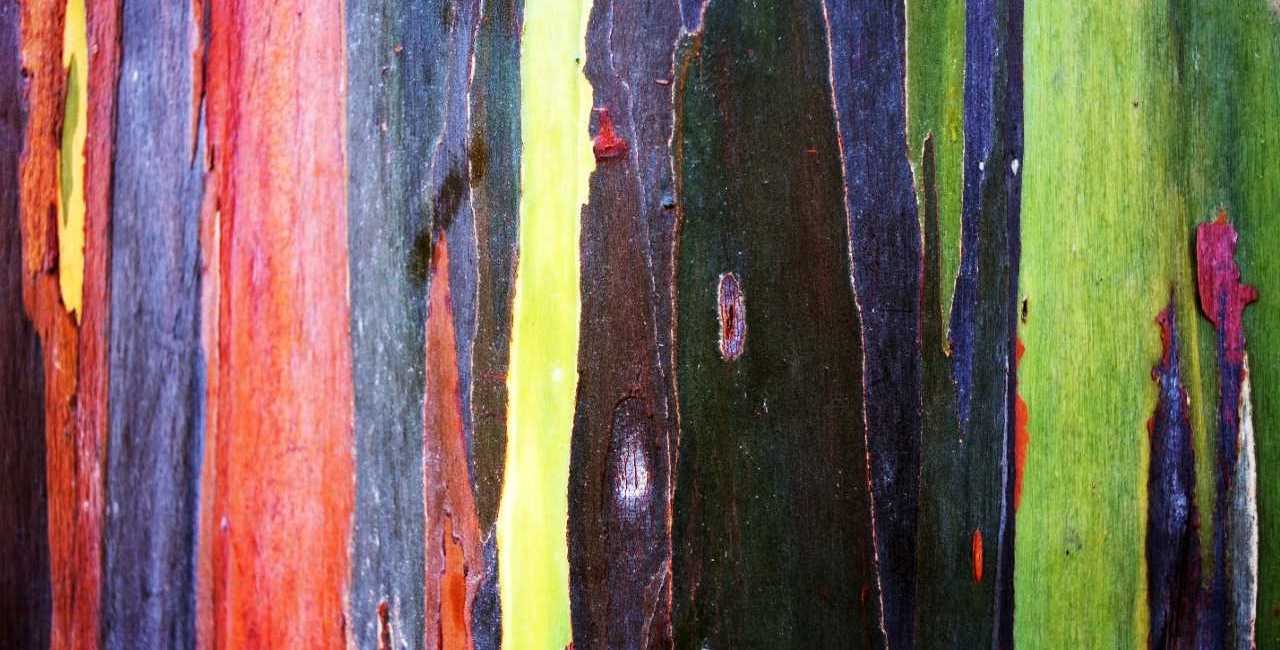
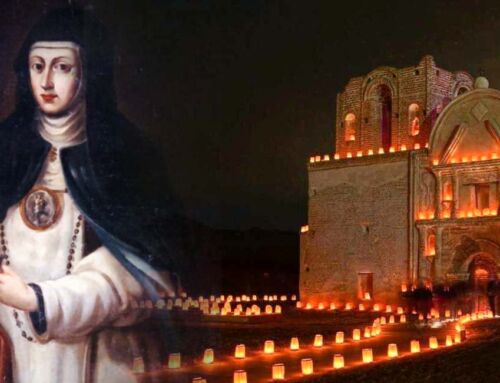
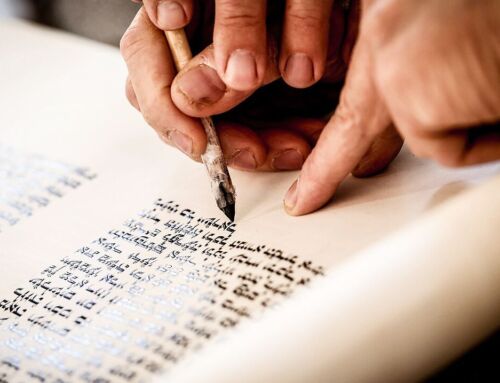
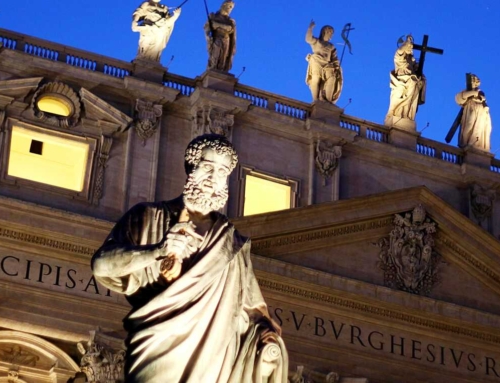
Leave A Comment